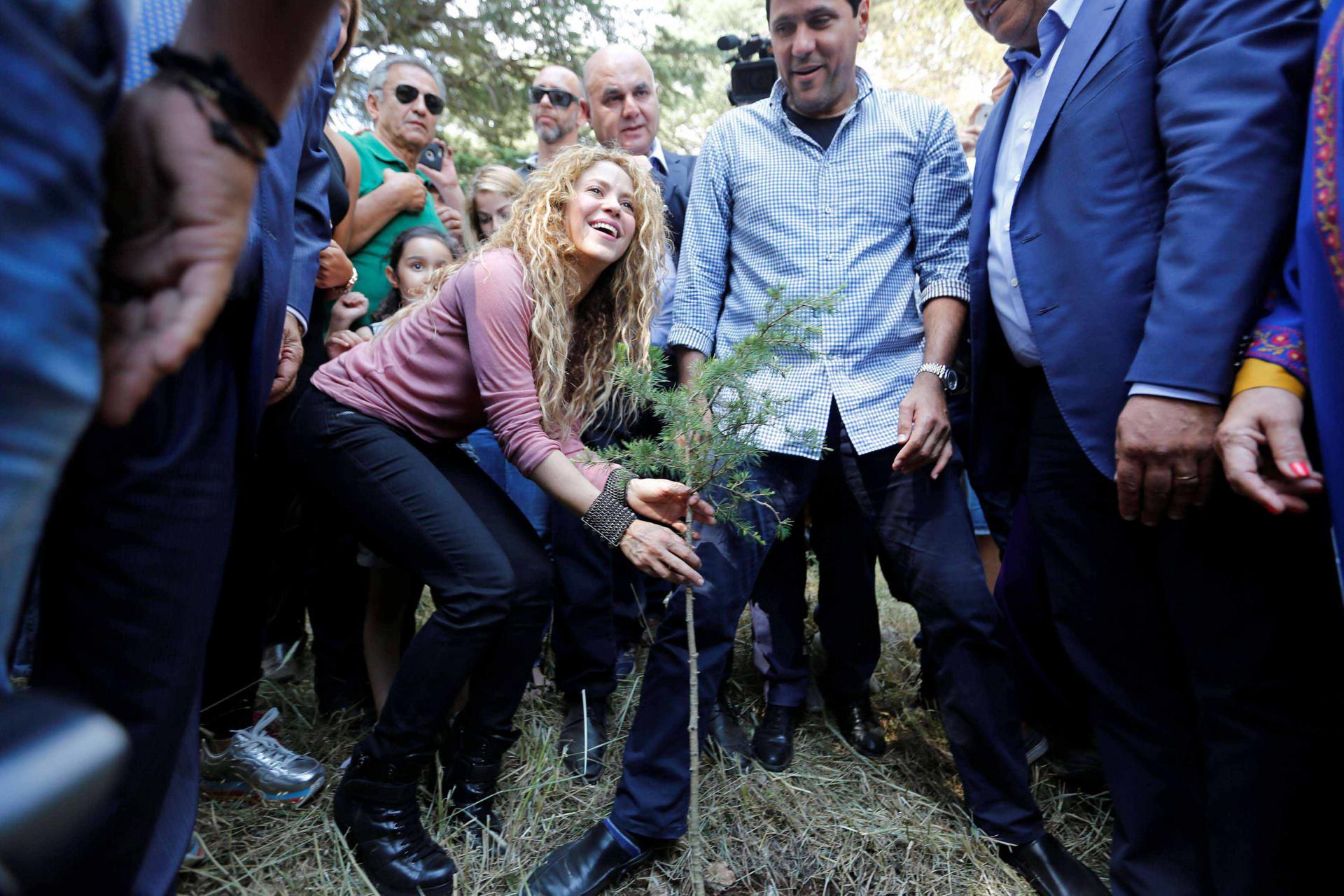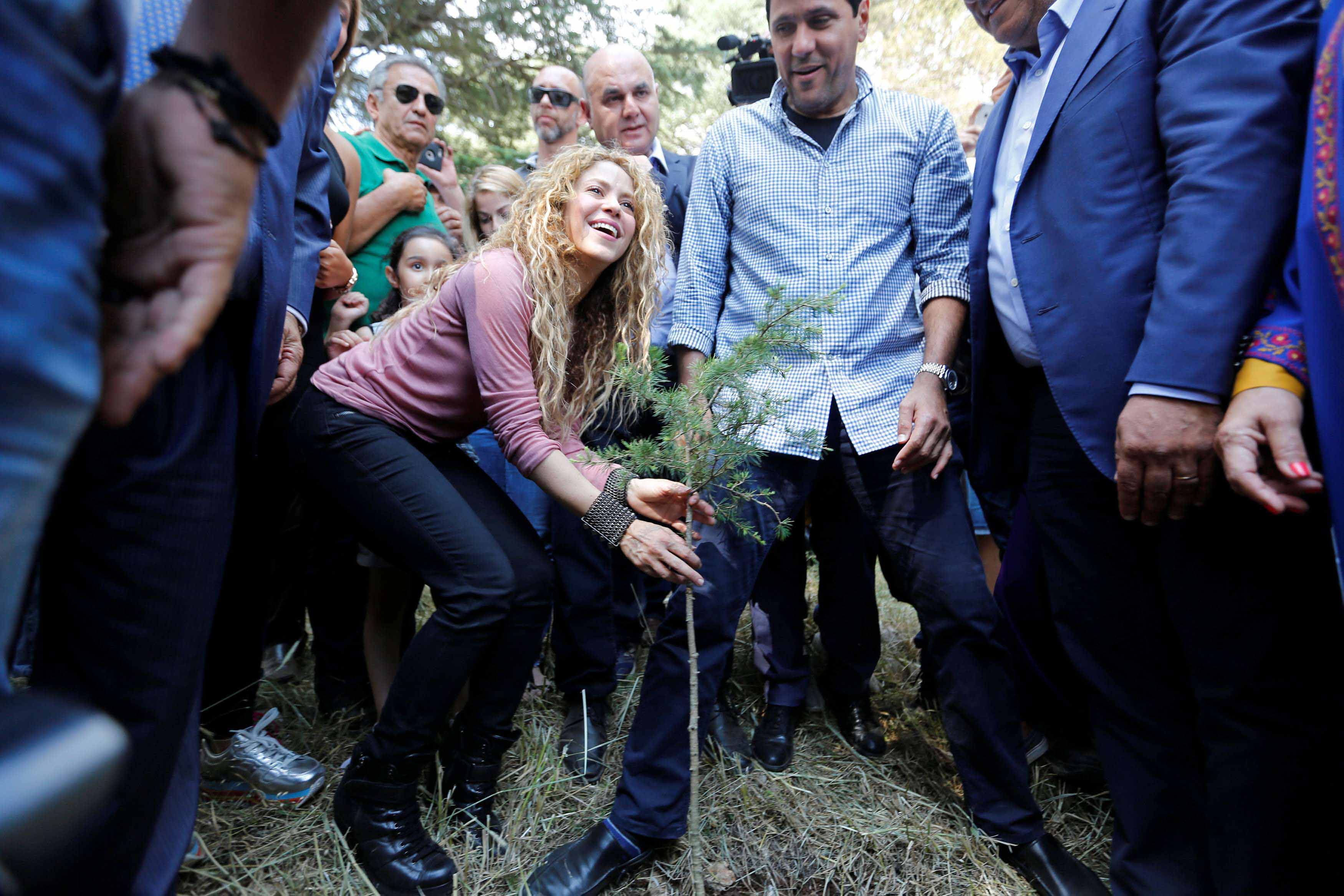Climate change takes its toll on Lebanon’s millennium cedars
BEIRUT - They have capped Lebanon’s mountaintops for thousands of years. The Phoenicians used their wood to build merchant ships and Egyptians used their resin to mummify the dead. Now the emblematic cedars of Lebanon (Cedrus Libani) are facing their biggest challenge -- climate change.
Cedar forests covered 5,000 sq.km of Lebanon’s highlands in ancient times. They have outlived invaders, empires and modern wars but centuries of deforestation have reduced the forests to 20 sq.km.
The trees, some 3,000 years old, thrive on moisture and cool temperatures and their seeds need a minimum amount of snow and rain for regeneration. However, with climate change, winters are shorter and there is less snow, a change that affects the cedar forests’ ecosystem.
“The effect of climate change is there. However, the cedar tree is a very resilient tree, which can adapt to all changes,” said Nizar Hani, director of the Cedar Biosphere in the Chouf Mountains.
“The natural regeneration conditions of the cedar forest are changing. The seedlings, which normally should stay buried in the snow for 2 to 3 months, are germinating in February instead of April because the snow is melting very early. That early germination puts them at a very high risk of dying in cold snaps,” Hani said.
Because of climate change, cedar forests, which now are at a minimum of 1,200 metres above sea level, would be found at higher altitudes in search for more suitable conditions, Hani said.
“This is a kind of mitigation in which trees will be growing in the right conditions to live and to regenerate,” Hani said. “Currently, the range of the cedar forest is 1,200-1,800 metres. For the past two years, we have been able to do reforestation at higher altitude, 1,900 metres. The treeline is different now.
“Those existing at lower altitude will survive because the trees can adapt. We are replanting trees on the higher slopes to make the ecosystem more resilient to climate change. We are enlarging the surface of the cedar forest because the bigger it is, the better it will be able to adapt to change.”
The most lethal enemy of the cedars are insects that are present in the forests’ ecosystem but have been developing at an increased rate because of climate change, said Nabil Nemer, of the agricultural sciences department at the Holy Spirit University of Kaslik.
“In Tannourine and Ehden cedar forests, a type of insect (Cephalcia tannourinensis) has been developing at a fast rate. The insects’ life cycle has changed. In the past, they used to hibernate between 3 to 7 years. They are now waking up every year because of warm and dry weather and causing harm to the trees. Such stress over three consecutive years leads to the death of the tree,” Nemer said.
The Tannourine Cedar Forest Natural Reserve has lost tens of trees to insect infestations unknown before the 1990s.
Nemer has been breeding the predator of the insects, a type of fungi that exist naturally in the forest and can kill the larvae.
A national strategy for the preservation of green areas begun four years ago envisioned the planting of 30 million trees, including cedars, to increase the area of the forests in Lebanon from 13% to 20% by 2020.
“The strategy is primarily focused on reforestation but the solution is not by replanting trees,” Nemer said. “First, we need to take care of the health of the ecosystem in which the cedar trees and other trees are living. I am afraid that we will not be able to confront the climate change at the speed it is going on. We might also have new types of insects appearing because of warmer weather.”
In the 1960s and 1970s, Lebanon had a Green Plan that replanted many cedars but the plan was forgotten during the 15-year civil war.
“In the past ten years we have planted more than 300 hectares (in the Chouf biosphere),” Hani said. “These include other species of trees, like oaks and pines. When we do restoration it is not only with cedar trees but with all the species that exist in the cedar forest.”
Cedars grow slowly, bearing no cones until they are 40-50 years old. When they are young by cedar standards, they look much like other conifers but, after about 100 years, they develop their distinctive shape with branches stretching parallel to the ground.
The majestic tree that is emblazoned on Lebanon’s national flag, currency and national airline is seen as a unifying emblem by the Lebanese and a reflection of their country’s resilience to the mishaps of ancient and modern history.
Samar Kadi is the Arab Weekly society and travel section editor.
This article was originally published in The Arab Weekly.







